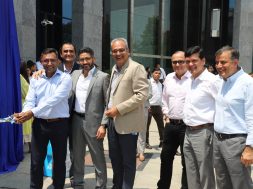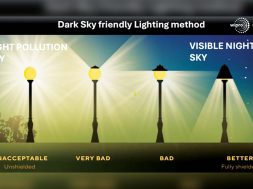Defining Indistinctive Aesthetics through Façade

Pritesh Vasa, the Creative head of Vasa Design, speaks on the importance of a façade and the best material used while designing a façade.
How important is a building’s façade in adding character and personality and protecting it from external influences?
The term “façade,” which derives from the Italian word “facciata,” refers to the exterior faces of a building. As one of the most apparent and recognised components of a building, the “facade” serves as an identity for any architectural project, establishes the first impression, and is the heart and soul of a building.
It acts as a barrier between the inside and outside and has a crucial functional role in light transmittance, acoustic performance, and energy efficiency. With strategic designing and accurate treatment of fenestrations, it can provide the user with an excellent source of natural light and ventilation while protecting the occupants from the rain, wind, and other extremes of nature, imparting a sense of security and comfort.
A building’s facade could be made more energy-efficient using suitable materials. What are the best materials to use when designing a facade?
Despite the vast array of materials, we have at our disposal, a building façade instinctively has to be in response to the context of the specific project. Please consider this similar to clothing, where one dresses according to the context.
The facade has to complement its surroundings and add value to the building, with the materials used to justify its efficiency and stand the test of time. Consequently, the materials should be selected after carefully considering and understanding the project’s demands.

In areas where we need to deflect sunlight and keep the indoors cool, what design measures should be taken to create a building envelope?
The simplest ways to keep the heat out are to use proper building materials and strategically placed windows. Understanding the sun’s path proves crucial in that respect. By and large, creating vegetation and foliage inthe south pocket will help reduce heat transmission, while having large openings on the north face will aid in letting in ample natural light without the heat.
East- and west facing windows are more challenging to shade; hence, Brise Soleil can be an ideal choice here. They can be in louvres or screens, ensuring maximum daylight and sufficient cross ventilation without compromising privacy.
What’s your take on glass facades? Can we consider them energy efficient in the Indian context?
Today, one of the most preferred ways to instantly enhance the style quotient of a building is a glass façade. Along with being weather-resistant, glass transmits 75–80 percent of the natural light, uplifting the space’s vibe and offering uninterrupted views to the occupants.
Nonetheless, glass also absorbs and traps heat, a concern in the Indian context. However, the latest technological developments have resulted in it being able to regulate heating and cooling in buildings, which is valuable in terms of both meeting energy requirements and efficiency.

In what ways can Low-E coatings help glass facades become more energy efficient?
Low-e coatings have been developed to be “spectrally selective,” affecting particular wavelengths of light but not others, to lower the emissivity of glass. It allows visible light to flow through the glass but reflects ultraviolet radiation, heat energy, and infrared light, which deteriorates and ages interior components. Low-E glass can reduce the amount of heat transmitted through the glass by about 30 percent. By lowering glare, the glass also increases thermal efficiency.
What kind of waterproofing membranes and substrates should be used to ensure leakproof facades, and what kind of additional maintenance is desired?
Polyurethane-based resins are the next best thing. These membranes have excellent heat resistance and can be easily customised to any shape and size. Once applied, the homogeneous layer ensures a seamless finish that is toxin-free and breathable.
Cookie Consent
We use cookies to personalize your experience. By continuing to visit this website you agree to our Terms & Conditions, Privacy Policy and Cookie Policy.










